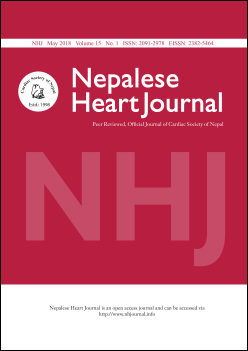Carotid intima-media thickness and coronary artery Disease
DOI:
https://doi.org/10.3126/njh.v15i1.19705Keywords:
Carotid intimal-media thickness, coronary artery DiseaseAbstract
It is known from the post-mortem studies of accidental death that atherosclerotic process begins in childhood and gradually progresses over decades. Only when the process leads to flow limiting stenosis as a gradual narrowing or when a thrombus forms at a site of plaque due to rupture or erosion, then the clinical cardiovascular event is manifested. Although only a certain percentage of people with underlying atherosclerosis become manifest, the greater degree of subclinical atherosclerosis is associated with greater chance of future events. The event could be sudden cardiac death at its extreme. The ultrasound measurement of carotid intima-media thickness (CIMT) has withstood test of time as an important technique of measuring atherosclerotic burden. It has been more than three decades to know the value of CIMT in the risk prediction.
NepaleseHeart Journal 2018; 15(1): 9-15
Downloads
Downloads
Published
How to Cite
Issue
Section
License
This license enables reusers to distribute, remix, adapt, and build upon the material in any medium or format, so long as attribution is given to the creator. The license allows for commercial use.




